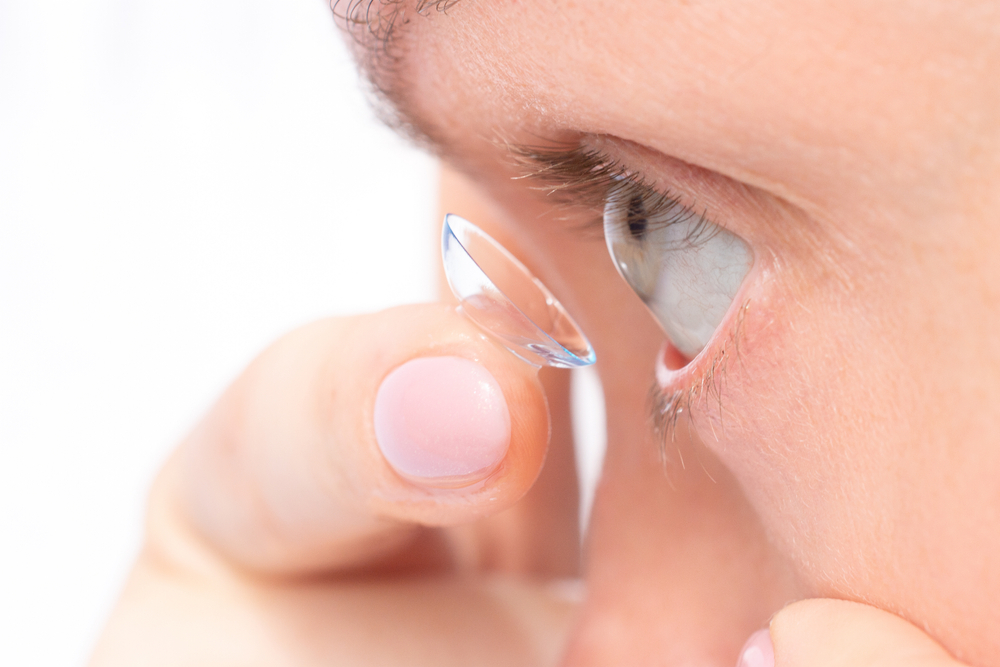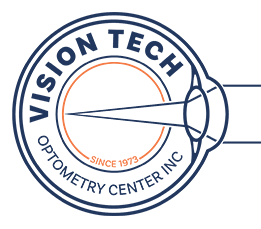
If you decide to get contact lenses, you will go through a fitting process. Contact lens fitting is a vital part of healthy contact lens use. Fitting helps ensure you wear lenses of the right type, size, and design.
Improperly fitted lenses can affect comfort and vision clarity. They can also increase the risk of eye complications. An eye exam and fitting are essential for finding lenses that suit the patient’s visual needs.
Contact Lens Eye Exam
The first step in the journey to contact lens wear is an eye exam. A contact lens exam is similar to a regular comprehensive exam. It helps to assess the patient’s vision and eye health. Unlike a comprehensive eye exam, the focus is on evaluating conditions related to wearing contact lenses.
Comprehensive exams test refraction and visual acuity, which determine eyeglass prescription. A contact lens prescription is different from an eyeglass prescription because of the lens shape and distance from the eye.
Contact Lens Preferences
If you are a good candidate for contact lenses, your eye doctor will discuss the different lenses available. You can discuss your expectations and preferences and whether you want daily disposables or multiple-wear lenses.
There are many contact lens types and brands. If you wear contacts, the doctor will ask about comfort and whether you experience eye dryness. You can learn about specialized contact lenses for various eye conditions. Age-related eye conditions, such as presbyopia, can be addressed using contacts.
Evaluating Eye Shape
Contact lenses sit directly on the eye surface, and it is necessary to measure the surface. The lenses fit perfectly over the eye surface. Regular contacts conform to the cornea’s shape. If the cornea is irregularly shaped, it can affect vision.
Cornea mapping helps to create personalized sizing, ensuring the lenses fit and function effectively. Eye specialists use corneal topography to provide a detailed 3D scan of the cornea.
Eye Surface Measurements
During a contact lens fitting, eye specialists evaluate the eye’s shape and pupil size. Measurements include:
Cornea shape and curve. Keratometry helps measure the cornea’s shape and curve. It helps to determine the prescription (lens power) and corneal health.
Pupil and iris size. Contact lenses cover the pupil and iris and help with light focusing. Pupil alignment in the lens is vital for clear vision.
An evaluation allows optometrists to determine the best lens fit and the ideal type of lenses for you.
Tear Film Evaluation
If you suffer from eye dryness, the doctor may evaluate your tear film. Measuring the tears will determine if you have a healthy tear film to support contacts. If you have insufficient tear film, you may have chronic dry eye syndrome. If you insist on wearing contacts, the doctor can recommend lens designs that deliver moisture to the eye surface.
Contact Lens Fitting
The final step is to fit you with trial lenses. The eye doctor will examine the lenses in your eyes to see if they are a good fit. Several tests will help ensure you get the correct prescription. If the fit is perfect and the prescription is optimal, you will receive trial lenses for one week. During the follow-up exam, you can confirm if you like the lenses. You can then order your supply of contact lenses.
For more on the contact lens fitting process, visit Vision Tech Optometry Center. Our office is in Waynesboro, Virginia. Call (540) 215-8361 to book an appointment today.






